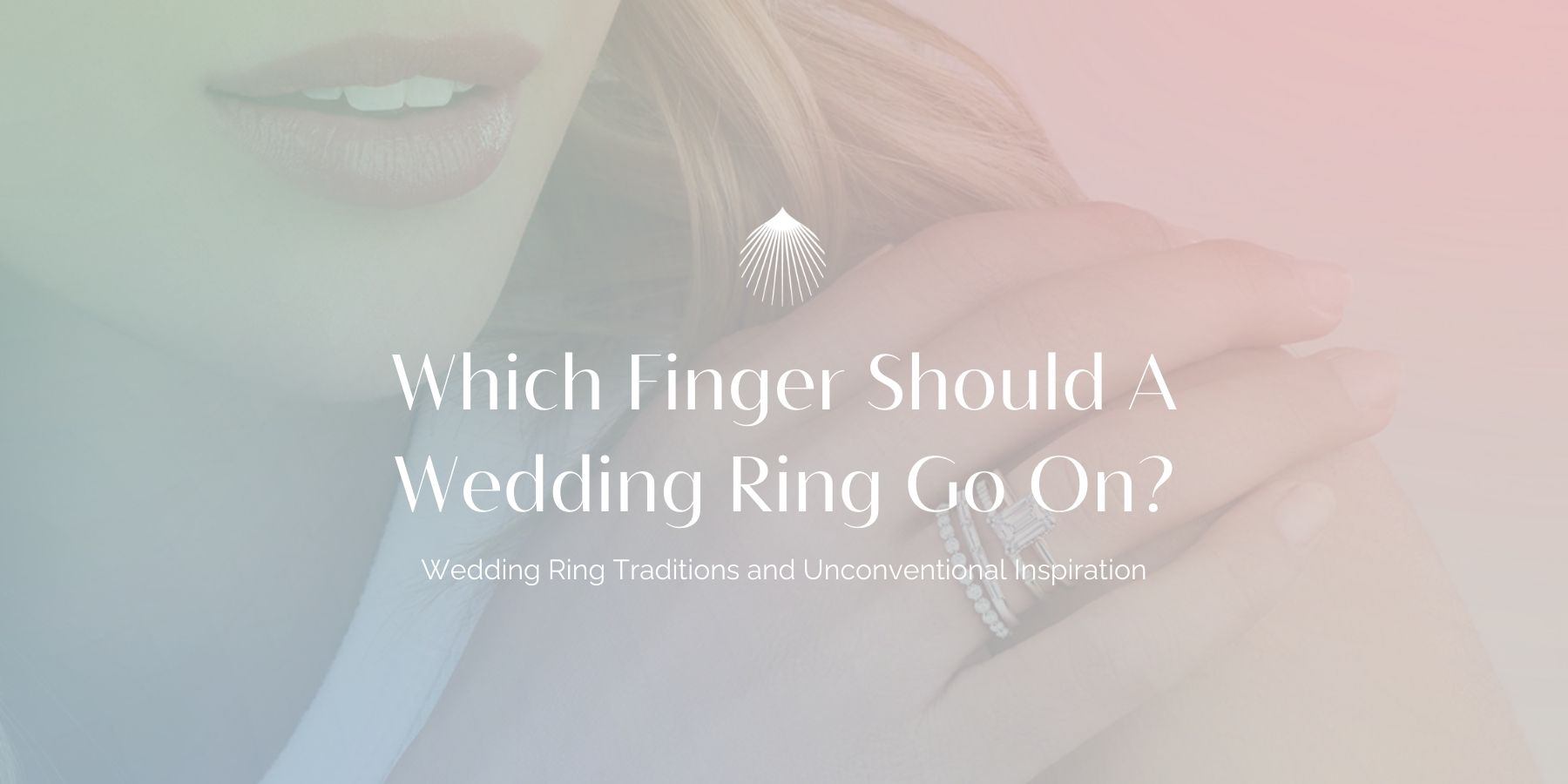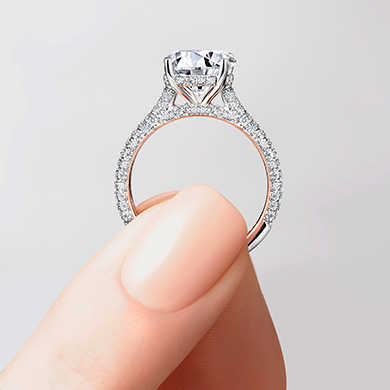The wedding ring is symbolic across many cultures in representing the commitment between two individuals. Historically, the wedding ring finger has been worn on the fourth finger of the left hand. However, you may not be aware that this can differ based on cultural, historical, and personal preferences. People might choose different fingers for various reasons, including their engagement ring placement or other rings they wear.
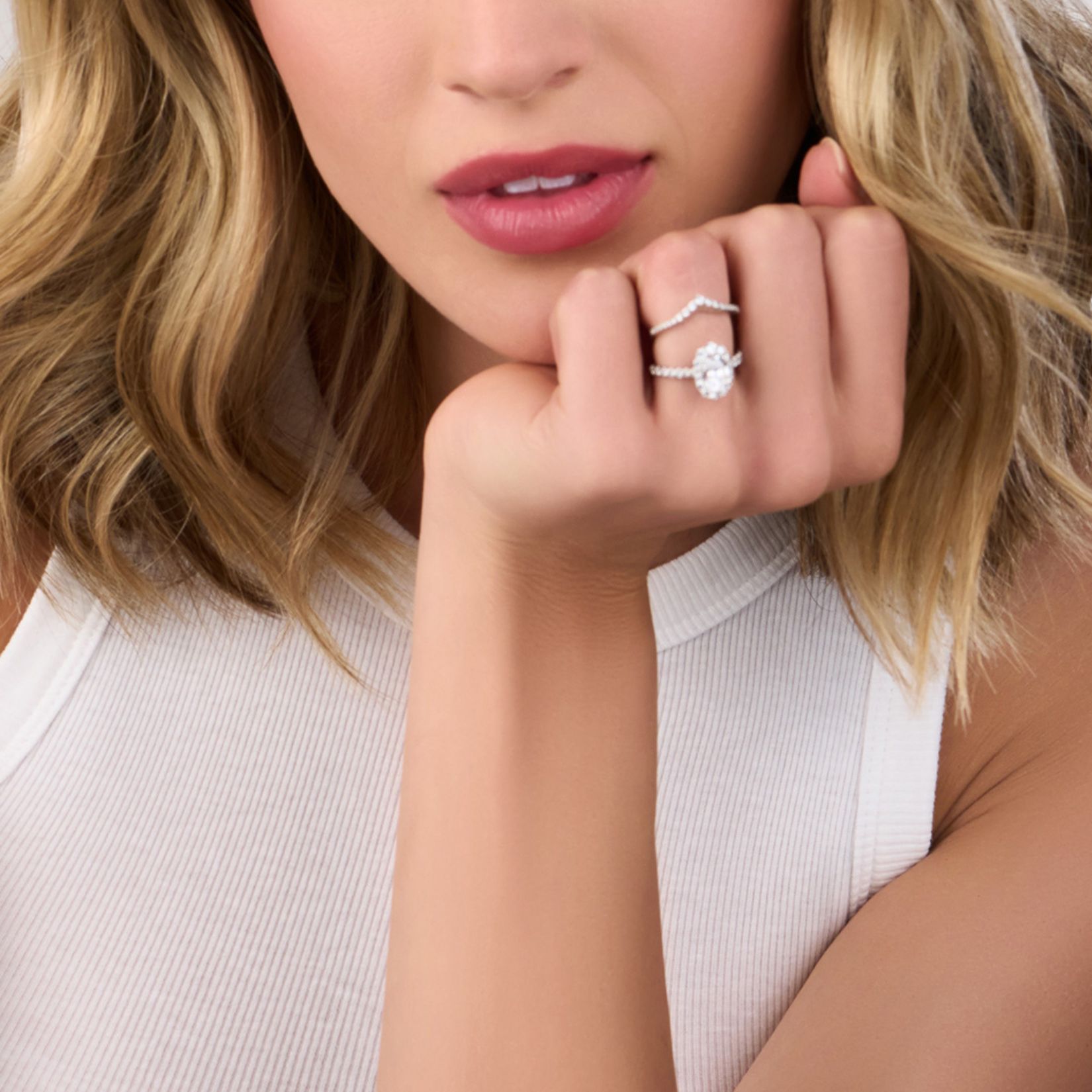
(from top to bottom) Curved Chevron Diamond Wedding Band and Oval Cut Halo Engagement Ring – Jillian
The Tradition of the Fourth Finger
The tradition of wearing the wedding ring on the fourth finger of the left hand is deep-rooted in history and brimming with symbolism.
The Vena Amoris
The Latin term “vena amoris” translates into English to mean “vein of love.” This stems from the beliefs of the Ancient Romans, Greeks and Egyptians, who believed that the vein on the ring finger ran directly to the heart.
Significance in Ceremonies
In modern wedding ceremonies, the ring’s placement on the fourth finger of the left-hand carries forward this tradition. Combining our ancestral beliefs regarding “vena amoris” and the ring finger’s position on the hand, this symbolizes a safeguarded and enduring marital bond that is close to the heart.
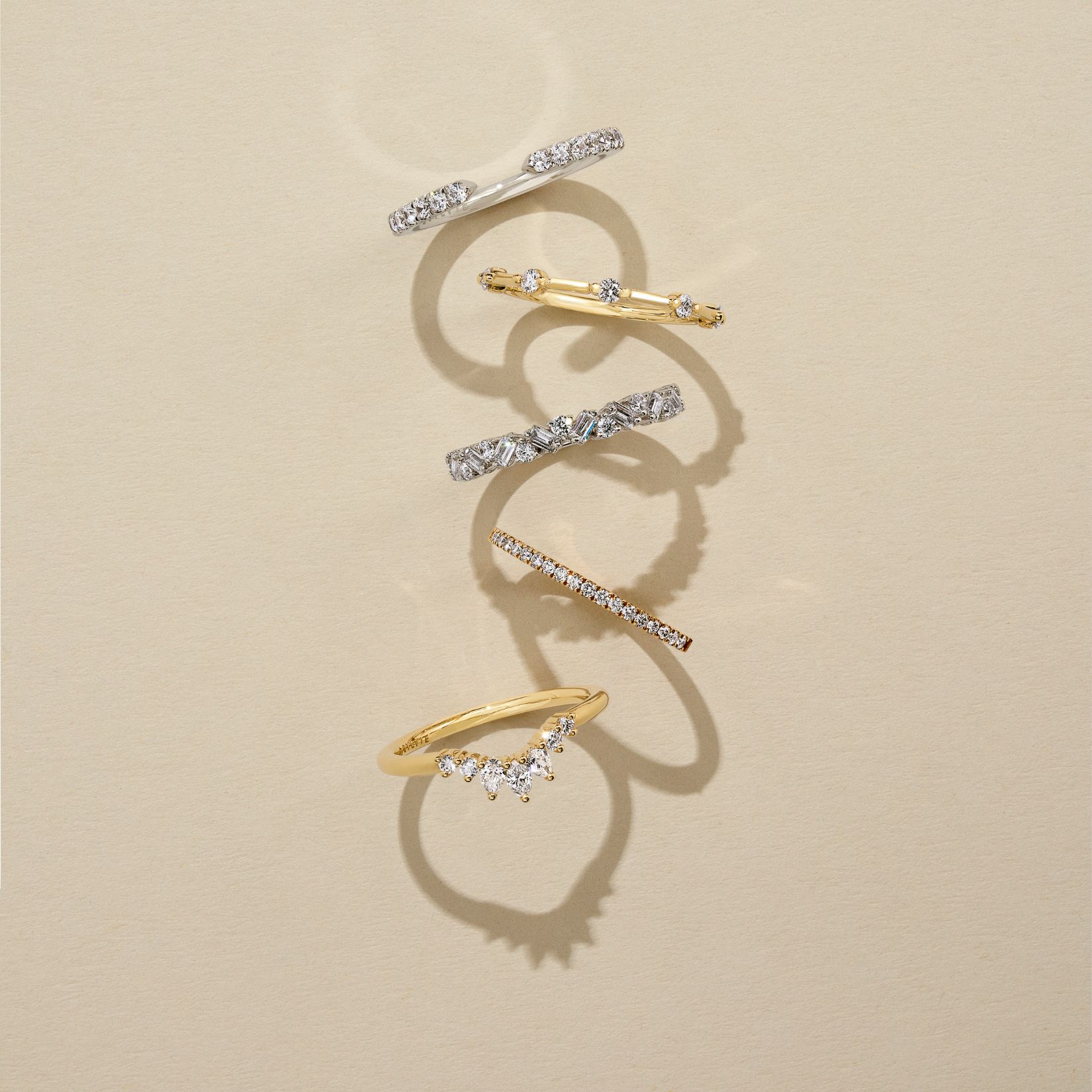
(from top to bottom) Classic Modern Open Wedding Band – B147, Classic 1-Prong Wedding Ring – B121, Emerald and Round Alternating Diamond and Baguette Wedding Band – B129, Classic Wedding Band – BS1093, and Curved Diamond Wedding Band – B0104
Modern Variations
The tradition of wearing wedding rings on a specific finger has seen various adaptations. Today, many couples are breaking conventions, wearing their rings on different fingers that resonate with their personal or cultural preferences.
For instance, in certain cultures and regions, wearing the wedding ring on the right hand is common. This is especially noted in Eastern European, Scandinavian, and South American countries.
There’s also a rising trend of individuals wearing rings on their right middle finger, little finger or thumb, often signifying personal beliefs or aesthetics.
Whether it’s an engagement ring or a wedding ring, the choice of finger is becoming increasingly personal, embracing the diversity of modern love.
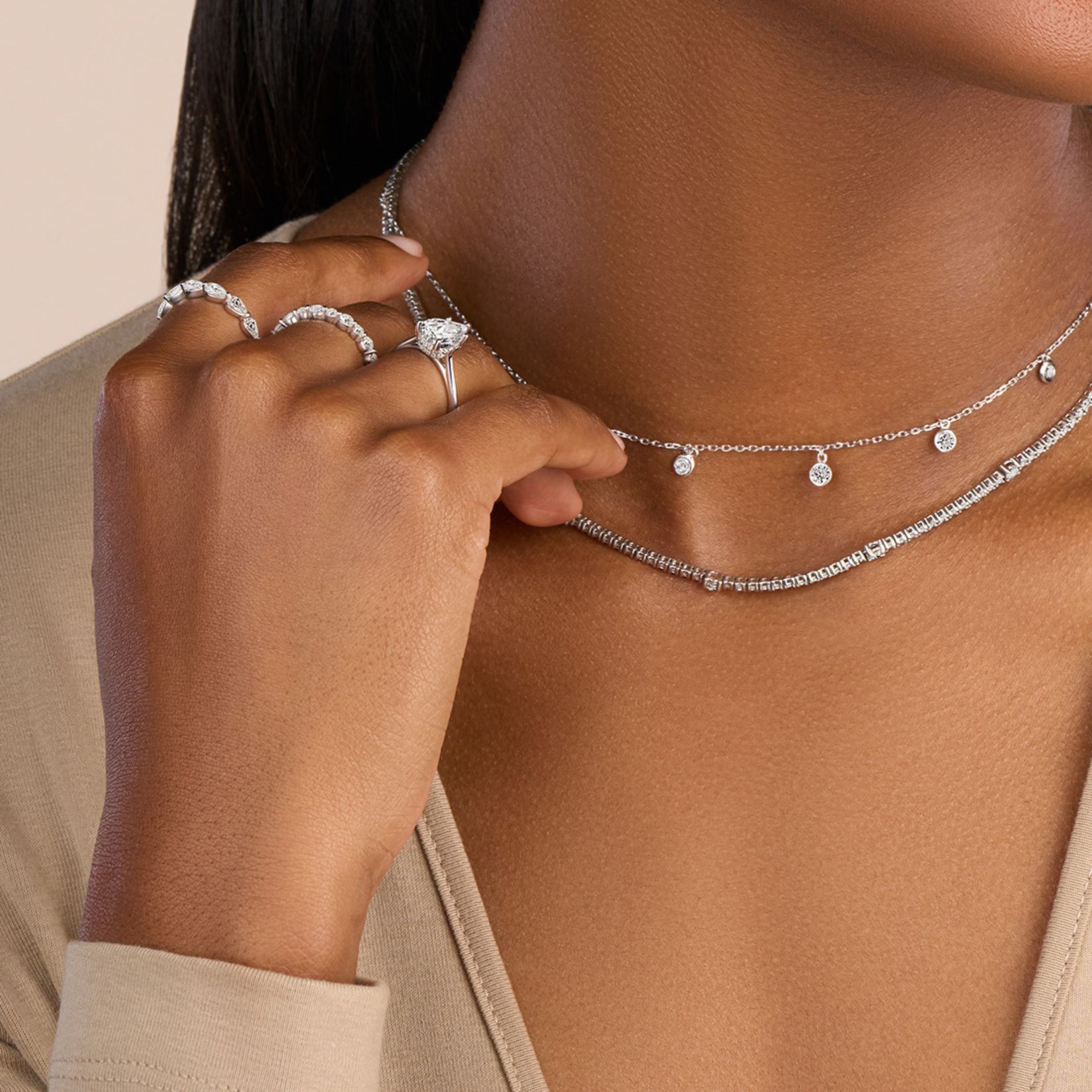
(from left to right) Classic Pear-Shaped Band – B124, Alternating Shared Prong Wedding Band – B1P11, and Pear Shaped Solitaire Hidden Halo Engagement Ring – Carter
Personal Preferences
When it comes to wearing a wedding ring, the decision often goes beyond traditions and becomes more about daily activities and personal preferences.
Comfort and Aesthetics
For many individuals, the decision of which finger to wear their wedding ring on is influenced by practical considerations like comfort and aesthetics. Factors such as the nature of one’s work, lifestyle, and even the size and design of the ring itself can play significant roles in this choice. For instance, someone with a physically demanding job might prefer wearing the ring on a less dominant hand for practical reasons, or even choose a different finger if it feels more comfortable during daily activities.
Similarly, aesthetic preferences can influence this decision. Some may find that a wedding ring complements their style better on a different finger or even choose to wear it on a necklace. Ultimately, the choice of finger for a wedding ring is a deeply personal one and should resonate with the wearer’s comfort, lifestyle, and sense of beauty.
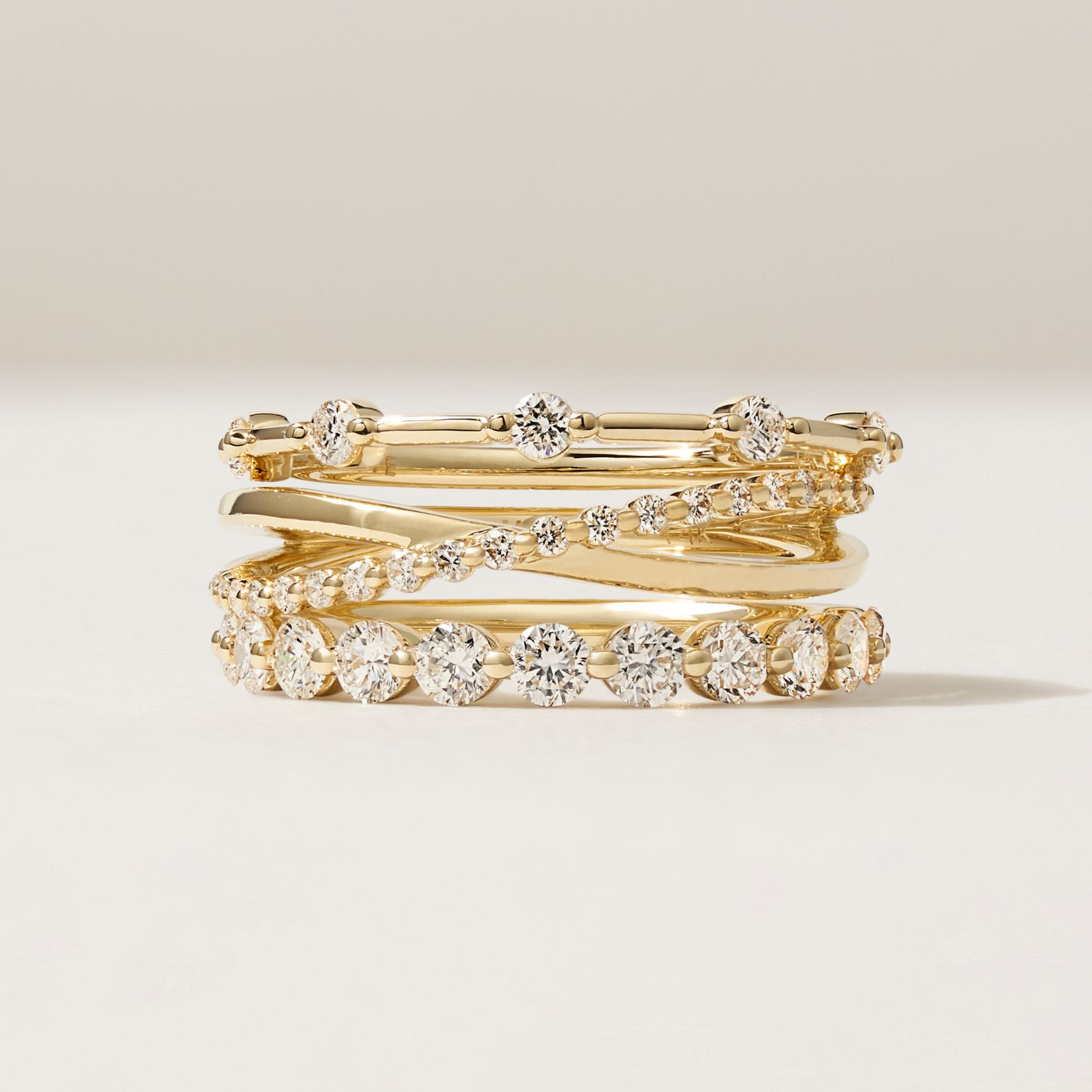
(from top to bottom) Classic 1-Prong Wedding Ring – B121, Round Diamond Crossover Wedding Band – B134, and Stackable Wedding Band 0.75 CT – B1P11
Engagement Ring and Wedding Ring Placement
It’s worth considering which finger you wear your engagement ring on. The placement of your wedding ring and engagement ring is a blend of tradition and personal style. The most common placements are:
Coordinated Sets
Ring sets are designed so the wedding and engagement rings fit seamlessly together, ensuring comfort and style. Each Sylvie engagement ring is designed with a matching wedding band that sits flush as a set on your finger.
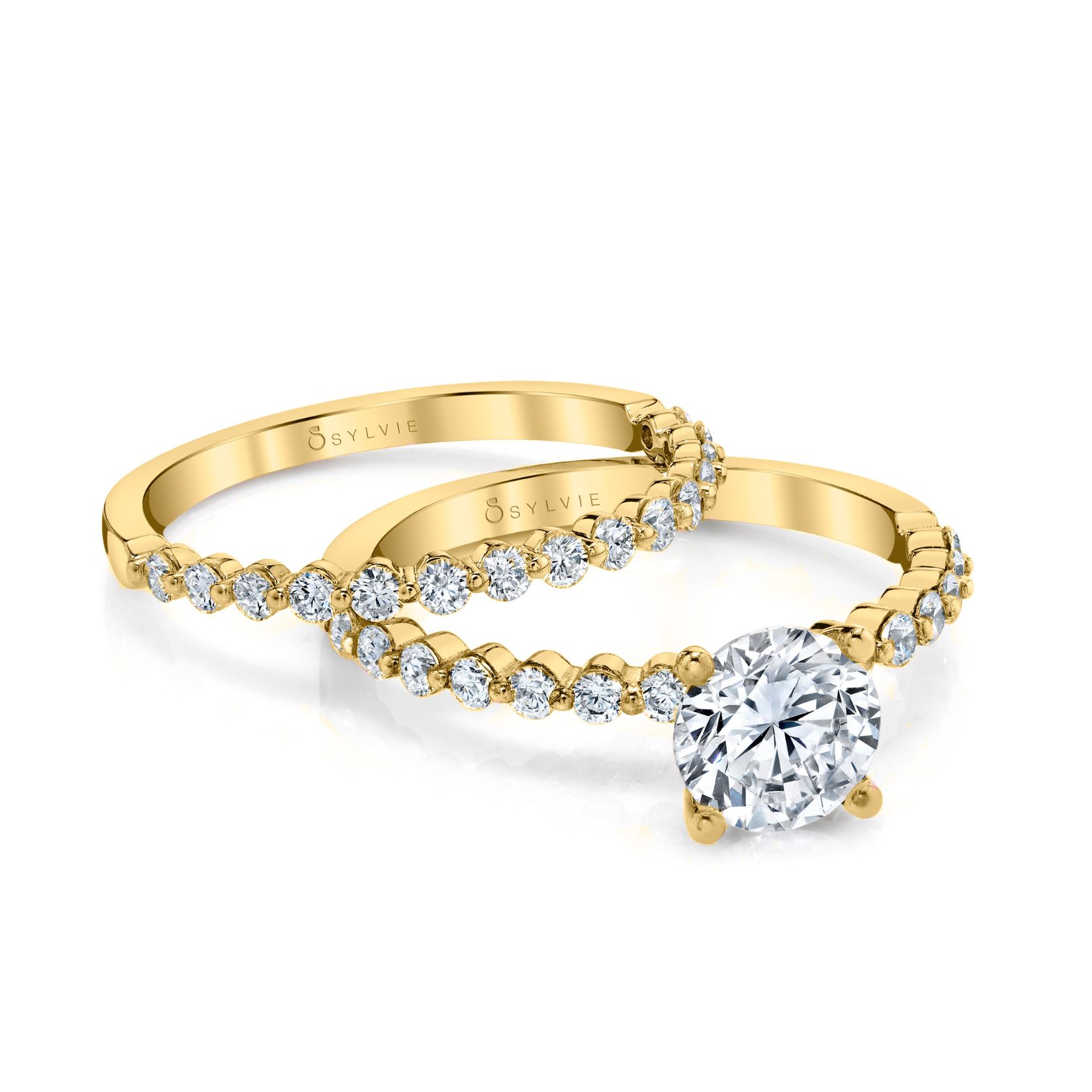
(from top to bottom) Stackable Wedding Band – B1P13 and Round Cut Delicate Engagement Ring – Ivanna
Stacking
Another option is stacking. Oftentimes, brides will create beautiful rings stacks that feature their engagement ring between two or three different styles of wedding bands. This is a unique and creative way to show your personal style through meaningful jewelry.
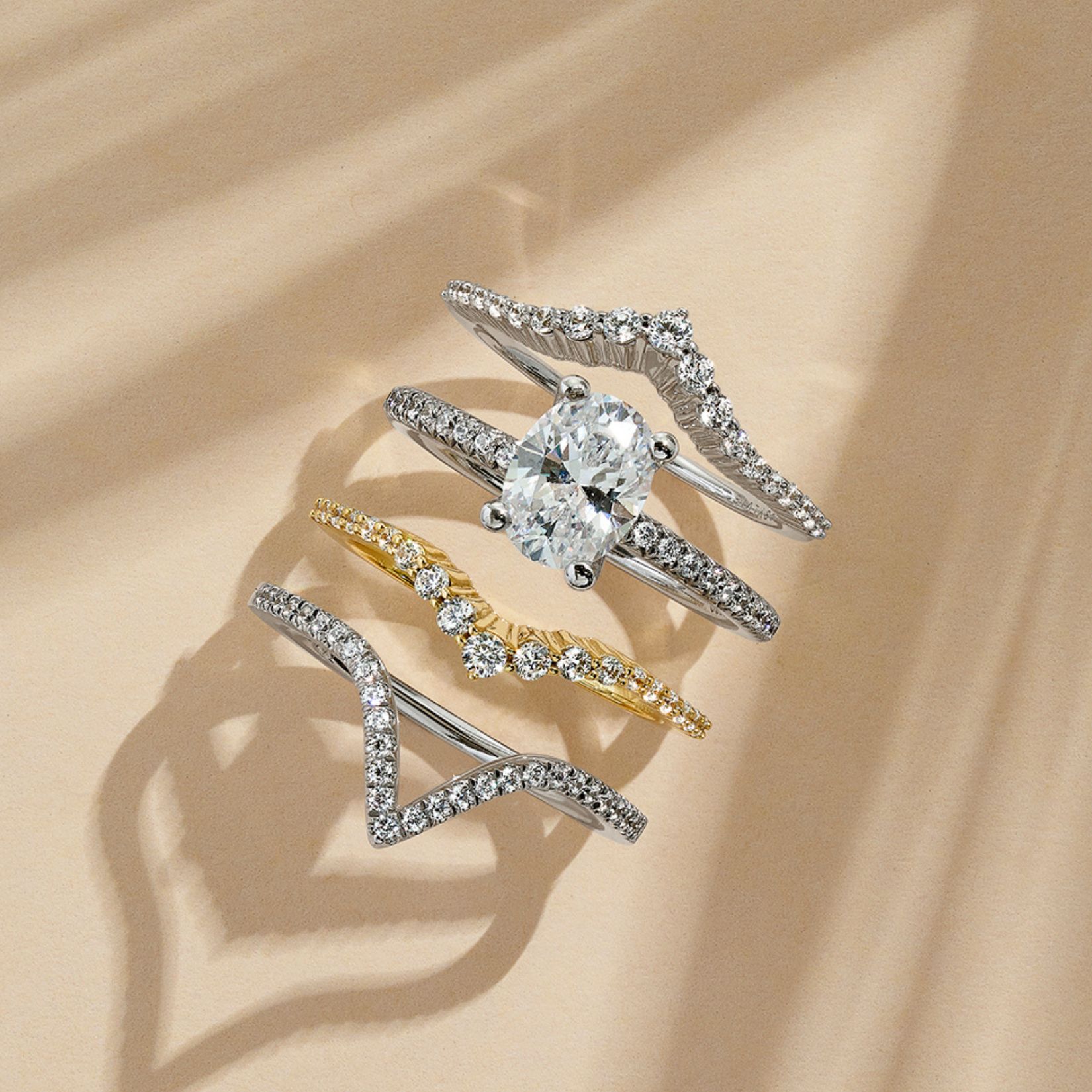
(from top to bottom) Curved Chevron Diamond Wedding Band – B0080 in white gold, Oval Cut Classic Engagement Ring – Adorlee, Curved Chevron Diamond Wedding Band – B0080 in yellow gold, and Curved Chevron Diamond Wedding Band – B0107 in white gold
Alternating Hands
Another option is placing your engagement and wedding ring on alternate hands. Some people wear their engagement ring on their left hand and the wedding band on the right for individual shine.
Choosing the correct ring placement is all about aesthetics, comfort, and each ring’s unique significance to the individual wearing them.
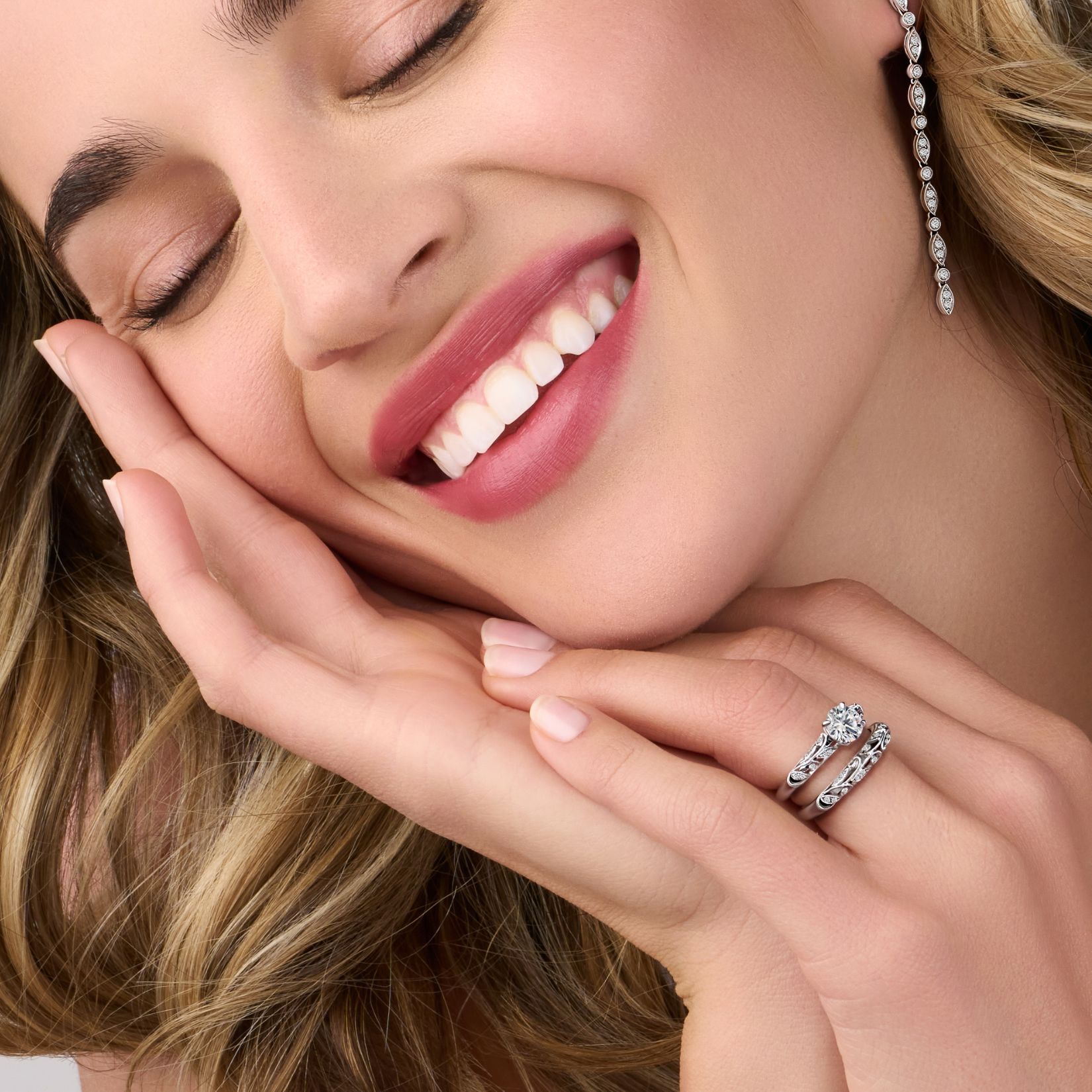
(from top to bottom) Round Cut Modern Vintage Engagement Ring – Roial and matching Modern Vintage Wedding Ring – Roial
Symbolic Meaning
Just as engagement rings hold symbolic meaning as a promise of marriage, wedding rings also carry symbolic weight and act as a symbol and a reminder of the vows that were made during the marriage ceremony. The unbroken circle of the wedding ring symbolizes eternity, an endless loop with no start or end, mirroring the timeless nature of love and commitment.
Communication with Partner
Choosing a wedding ring is a shared symbol for both partners. Not every couple wears a ring. It’s down to how you and your partner feel, so it’s worth conversing to discover your thoughts.
Open Conversations
Have an open and honest chat about whether you want to wear a wedding ring. Being patient and understanding while respecting each other’s viewpoints can strengthen your bond.
Cultural & Personal Beliefs
If one or other partner is marrying into a different culture or has different beliefs about marriage, having discussions about cultural backgrounds and personal beliefs can help. Often, these factors significantly influence the choice of wearing a wedding ring.
Comfort First
It is important for both partners to feel comfortable with their ring’s placement, ensuring it becomes a cherished part of daily life and not a hindrance. For instance, some professions and tasks can pose a risk to safety, such as healthcare professionals and those who conduct manual work or in the construction field. If this is the case, other options, such as wearing the ring on a chain around the neck, may be an option.
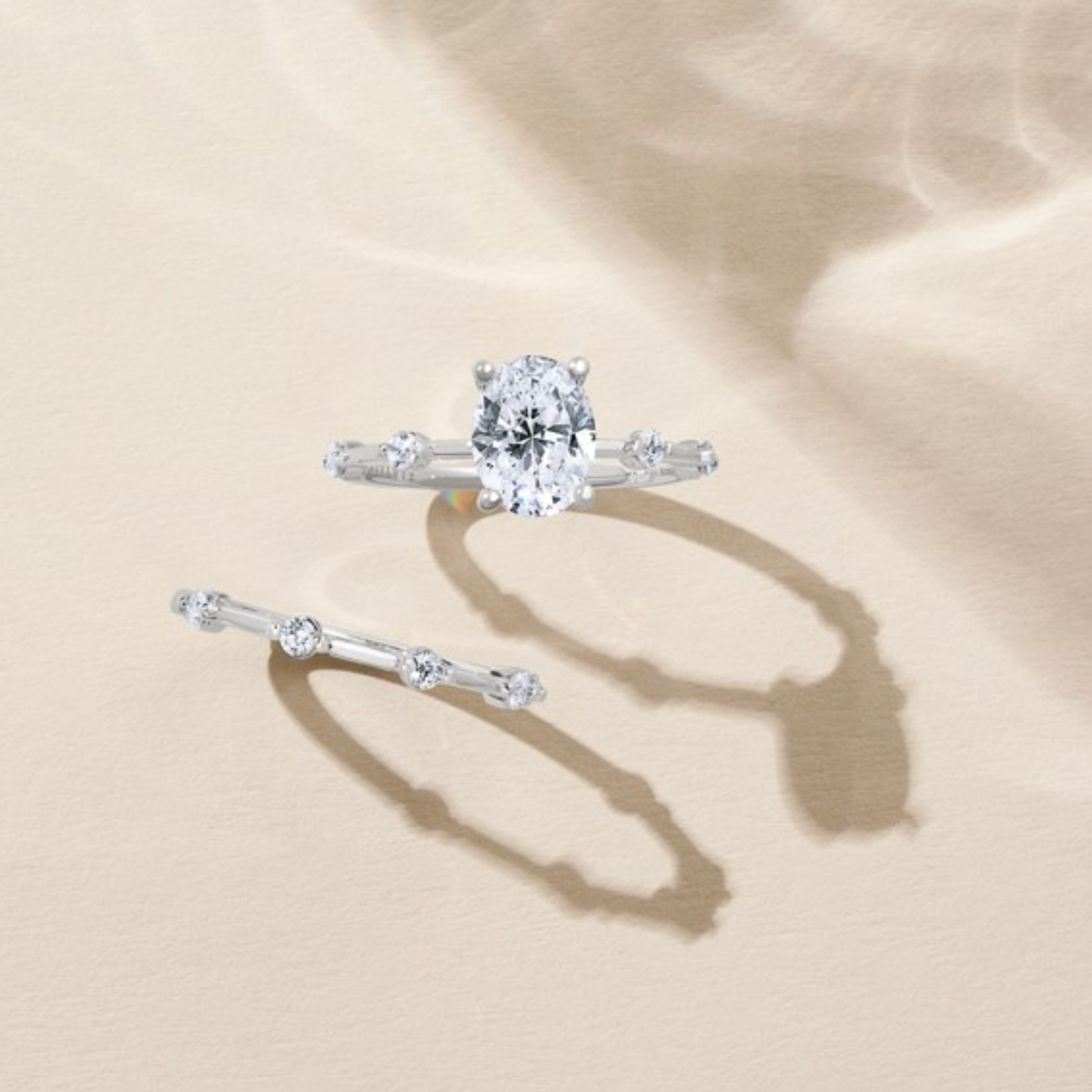
(from top to bottom) Oval Cut Diamond Engagement Eniko and matching Classic 1-Prong Wedding Ring – B121
Final Thoughts
Ultimately, it’s less about which finger the ring is worn on and more about the mutual understanding and respect between partners. In selecting a wedding ring, individuals consider traditions, symbolism, personal preference, and even the aesthetics of wedding jewelry. While wearing rings on different fingers can resonate differently with people, what remains constant is the profound love and commitment that the ring represents.
